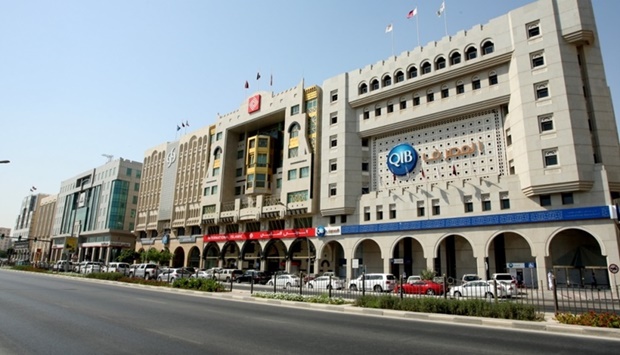Qatar has year-to-date seen up to 375 basis points (bps) increase in interest rates, reflecting the US monetary policy stand because of the fixed exchange parity.
The Qatar Central Bank (QCB) recently increased the deposit and repo rates by 75bps and lending rate by 50 bps, after the US Federal Reserve hiked its policy rate by 75bps at its latest federal open-market committee meeting.
Apprehensions are that the corporate sector might take a hit on hike in interest rates, although macroeconomic growth is expected to be robust owing to the hydrocarbons, which has had a strong run due to higher average energy prices.
The central bank said the hike (in interest rates) has come, following regional and international economic developments.
The hardening of interest rates in the region stems from the US Federal Reserve's series of rate hikes there as part of tackling inflationary pressures.
The QCB raised the deposit rate by 75bps to 4.5%. It also raised the lending rate by 50bps to 5% and the repo rate by 75bps to 4.75%.
The repo rate in Qatar has increased by a cumulative 3.75% or 375bps from the beginning of this year.
Since January this year, QCB repo rate has risen from 1% to 1.25% in March, then to 1.75% in May, 2.5% in June, 3.25% in July, 4% in September and the latest 4.75% in November. In 2021, the average repo rate was 1%.
The QCB lending rate has cumulatively increased by 2.5% or 250bps from the beginning of this year. It was seen jumping from 2.5% in January to 2.75% in May, 3.25% in June, 3.75% in July, 4.5% in September and the latest 5% in November. The average lending rate in 2021 was 2.5%.
Similarly, the QCB deposit rate has cumulatively jumped by 3.5% or 350bps, increasing from 1% in January to 1.5% in May, 2.25% in June, 3% in July, 3.75% in September and the latest 4.5% in November. The average deposit rate stood at 1% in 2021.
The weighted average overnight interbank interest rate (on riyal) stood at 2.61% in September compared to 0.28% in January.
A latest report from Oxford Economics said the GCC (Gulf Co-operation Council) countries could see a cumulative 425bps hike in interest rates in 2022, which will likely weigh on the region's non-oil GDP (gross domestic product).
"We expect growth in non-oil GDP in the GCC region to be 4.9% in 2022 and then ease to 3.4% in 2023," it said, adding "higher interest rates will increase borrowing costs, albeit at a slower pace".
Soon after the US Fed's latest move, the GCC central banks quickly followed suit – Saudi Arabia, the UAE, Oman, and Bahrain mirrored the rate hike, and their policy rates now stand at 4.5%, 3.9%, 4.5%, and 4.75%, respectively.
The GCC economies, barring Kuwait, follow fixed exchange parity with the US dollar, which stifle their monetary policies.
The Qatar Central Bank (QCB) recently increased the deposit and repo rates by 75bps and lending rate by 50 bps, after the US Federal Reserve hiked its policy rate by 75bps at its latest federal open-market committee meeting.
Apprehensions are that the corporate sector might take a hit on hike in interest rates, although macroeconomic growth is expected to be robust owing to the hydrocarbons, which has had a strong run due to higher average energy prices.
The central bank said the hike (in interest rates) has come, following regional and international economic developments.
The hardening of interest rates in the region stems from the US Federal Reserve's series of rate hikes there as part of tackling inflationary pressures.
The QCB raised the deposit rate by 75bps to 4.5%. It also raised the lending rate by 50bps to 5% and the repo rate by 75bps to 4.75%.
The repo rate in Qatar has increased by a cumulative 3.75% or 375bps from the beginning of this year.
Since January this year, QCB repo rate has risen from 1% to 1.25% in March, then to 1.75% in May, 2.5% in June, 3.25% in July, 4% in September and the latest 4.75% in November. In 2021, the average repo rate was 1%.
The QCB lending rate has cumulatively increased by 2.5% or 250bps from the beginning of this year. It was seen jumping from 2.5% in January to 2.75% in May, 3.25% in June, 3.75% in July, 4.5% in September and the latest 5% in November. The average lending rate in 2021 was 2.5%.
Similarly, the QCB deposit rate has cumulatively jumped by 3.5% or 350bps, increasing from 1% in January to 1.5% in May, 2.25% in June, 3% in July, 3.75% in September and the latest 4.5% in November. The average deposit rate stood at 1% in 2021.
The weighted average overnight interbank interest rate (on riyal) stood at 2.61% in September compared to 0.28% in January.
A latest report from Oxford Economics said the GCC (Gulf Co-operation Council) countries could see a cumulative 425bps hike in interest rates in 2022, which will likely weigh on the region's non-oil GDP (gross domestic product).
"We expect growth in non-oil GDP in the GCC region to be 4.9% in 2022 and then ease to 3.4% in 2023," it said, adding "higher interest rates will increase borrowing costs, albeit at a slower pace".
Soon after the US Fed's latest move, the GCC central banks quickly followed suit – Saudi Arabia, the UAE, Oman, and Bahrain mirrored the rate hike, and their policy rates now stand at 4.5%, 3.9%, 4.5%, and 4.75%, respectively.
The GCC economies, barring Kuwait, follow fixed exchange parity with the US dollar, which stifle their monetary policies.


